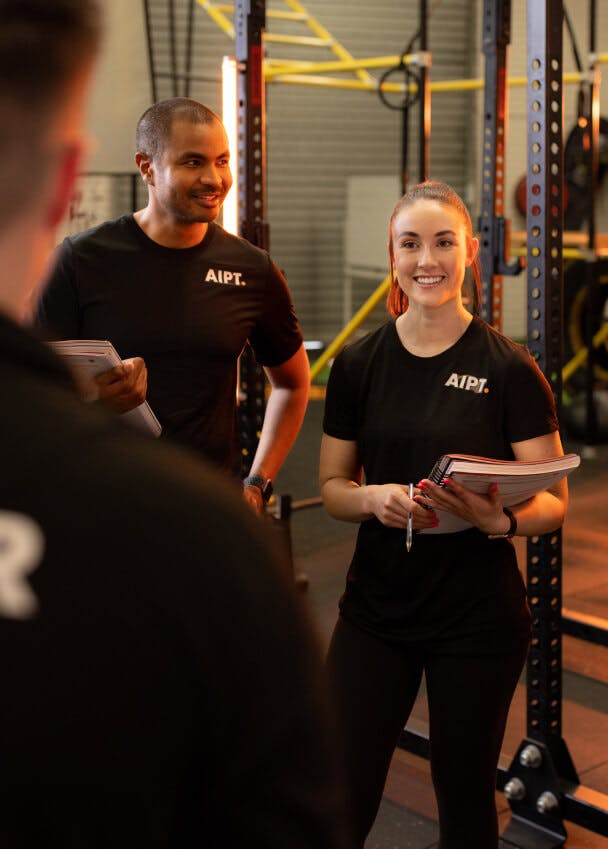16 May 2025
Personal Training Prices – Setting the Right Rates
As a Personal Trainer, planning your price point can be tricky. While you have the freedom to charge as much as you like, you also want to deliver value for money to your clients.
But how much should you charge as a Personal Trainer? How do you know what you’re worth?
Your personal training prices should all depend on the type, duration and delivery of your services, so let’s delve a little deeper to discover how you can effectively set your training rates for maximum profitability.
How much do Personal Trainers charge?
Australian Personal Trainers usually charge an hourly rate. This will look a little different from person to person depending on where and how they work and level of experience. If we’re talking national averages, PayScale puts this figure at $25–$59 per hour:
Here's what could impact your earning potential in different settings:
Working in a gym
When you work in a gym, your hourly rate may be a on the lower end of the scale as the gym usually takes a commission. The good part is it’s way easier to grow your client base from a gym because potential clients are at your doorstep every day.
One-on-one training
Working independently gives you more control over your pricing. You'll be able to charge higher rates than gym-based training because you keep your entire pay. But without a gym, you’ll need to cover own insurance, equipment and business costs.
New Personal Trainers may charge less, but you’ll be able to up your rates once you’ve got some experience under your belt.
Online training
Online personal training usually costs less than in-person sessions, making it more accessible to clients but less profitable per hour for trainers. The price you pay for convenience!
Lots of online trainers compensate by offering package deals rather than single sessions.
Personal training pricing calculator
To figure out the kind of personal training prices you need to set, decide how much money you want to earn per year. Is this going to be your full-time, part-time or weekend gig? Secondly, factor in your holidays or how many weeks you want to take off per year. Let’s say six weeks off per year to keep on top of your game (or a total of 46 weeks of work per year).
Lastly, decide how many hours you want to work per week. Realistically, there are going to be hours that you will find yourself fully booked (early mornings and evenings) and other moments you’ll find yourself with spare time on your hands (mid-morning and early afternoons). To maintain a healthy work-life balance, let’s say 30 hours of work per week.
Now, we find out how much to charge for personal training:
Let’s say you want to make your personal training a full-time career with a yearly income of $90,000.
$90,000 ÷ 46 (weeks of work) = $1,956
$1,956 ÷ 30 (weekly work hours) = $65.
Of course you’ll also have to factor in things like tax and business expenses, so you’ll realistically need to charge more to hit your goal.

What else could influence your personal training pricing?
We’ve talked about setting, but what else could play into how much you earn as a Personal Trainer?
Demand
Are you in an area rife with PTs or are you the sole trainer in high demand? Do some research and find out how many other training businesses are around you, and the kind of training they are offering. Depending on your location, you may have to consider lowering (or increasing) your prices to increase and maintain a strong client database.
Type of training
Take into consideration whether you’re offering one-on-one PT sessions, group training sessions or package deals. Your group personal training sessions should be set at a cheaper rate per person, with your package deals set at a certain price per session. For example, you may choose to offer a 10-session package for $500. With a package, a client will usually be required to pay in advance for a certain number of sessions (as opposed to payment upon each session for a regular one-on-one or group training session).
Your unique selling point
The more you have to offer, the more you can charge. Qualifications beyond your basic Personal Training certification can boost your pay. A qualification in nutrition, like the 10967NAT Diploma of Nutrition, gives you the knowledge to provide comprehensive meal planning and dietary advice alongside your training services. This creates a complete fitness and nutrition package that clients really love.
Other specialisations that can justify higher rates include rehabilitation training or sports-specific conditioning.
Get started in personal training with AIPT
Setting the right rates for your Personal Training services takes careful consideration of your experience, location, business model and unique offerings. Heaps of people undercharge when starting out, but remember that your expertise and the results you deliver for clients have real value.
Through courses like the SIS40221 Certificate IV in Fitness, you'll get actual work hours under your belt and advice from real Personal Trainers so you can start your career earning what you deserve.
Pursue your dream career with our nationally recognised Personal Training courses. Call 1300 616 180 today.
Related Articles

Career Opportunities in Fitness: Which Path is Right for You?
Explore career opportunities in fitness. Discover roles, salaries, and training pathways to start your health and fitness career today.

The Mindset You’ll Need to Succeed as a Personal Trainer in 2026
Discover the mindset that will set successful personal trainers apart in 2026. Learn how the SIS40221 Certificate IV in Fitness will help build confidence, resilience, and purpose.

Industry Supplier
Proud member of

© Australian Institute of Personal Trainers | RTO Number 32363
